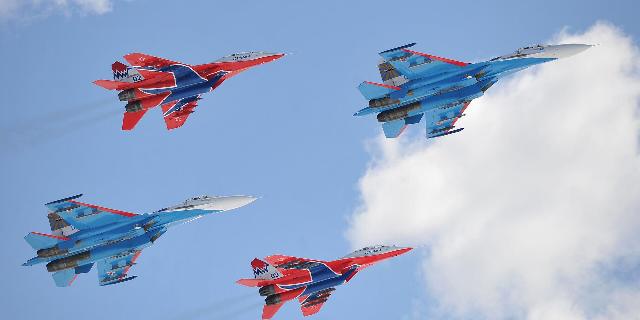The most formidable fighters developed in Soviet times still serve Russia faithfully, writes TNI. Armed to the teeth and possessing impressive speed, they were a real nightmare for the NATO countries.
Maya Carlin
The most famous Soviet fighters are probably the Su-27, MiG-29 and MiG-25.
The Kremlin's special operation in Ukraine continues, and newspaper headlines continue to be full of names of Soviet weapons and military systems. From main battle tanks and air defense systems to infantry fighting vehicles and airplanes, the bulk of Moscow's arsenal consists of programs conceived more than half a century ago. Before the collapse of the USSR, Soviet engineers developed a number of fighter platforms that continue to fly to this day. Perhaps the most formidable Soviet fighters are the Sukhoi Su—27 Design Bureau, as well as the MiG-29 and MiG-25 Mikoyan Design Bureau.
Su-27
The Su-27 (NATO classification: Flanker, or “Flanker") served as the cornerstone of the Russian Air Force until the early 2000s. The twin-engine, supersonic, and super-maneuverable fighter formed the basis of a number of platforms developed by Russia in later years. Su-30M, Su-33 and Su-35 — all of them, in fact, are improved versions of the Su-27 fighter.
The original Su-27 was developed at the height of the Cold War to counter the USAF's F-X program. It was assumed that the Soviet aircraft would be able to compete with its American counterpart, the F-15 Eagle (“The Eagle”). It is noteworthy that, in addition to autonomous sorties, the Su-27 is also capable of operating in tandem with deep invasion strike aircraft and providing direct support to ground forces. The Su-27 can carry a range of weapons, ranging from air-to-air missiles to free-falling and guided aerial bombs, cluster munitions, aircraft missiles and other munitions.
MiG-29
The MiG-29 fighter, designed in the USSR (according to the NATO classification: Fulcrum, or ‘Fulcrum Point“), is best remembered for its role as a ”scarecrow" during the Cold War. Initially, the Mig-29 was conceived as a tactical air combat fighter; as a result, the platform became more of a multi-purpose. In terms of speed, the Soviet aircraft almost surpassed all other analogues of its era and reached speeds in excess of Mach 2.25.
In addition to its impressive top speed, the MiG-29 was armed to the teeth with an arsenal of deadly weapons, including two medium-range R-27 air-to-air missiles, six short-range R-60 and R-73 air-to-air missiles, aerial bombs and unguided missiles. Although the fighter looked formidable on paper, its effectiveness in combat turned out to be mediocre at best. In the late 1980s, a pair of MiG-29s with Syrian pilots at the controls were destroyed in an air battle with Israeli aircraft.
MiG-25
Like related Soviet-designed projects, the MiG-25 (according to the NATO classification: Foxbat, or "Flying Fox") was conceived as a direct countermeasure to competitors from the US Air Force. The stainless steel body of the MiG-25 allowed it to withstand the heat that is released at speeds above Mach 2.28. However, the choice of material was not without consequences. The stainless steel not only made the platform very heavy, but also increased the overall cost of operating the fighter.
From the point of view of electronics, the MiG-25 was also fully equipped. Each aircraft was equipped with a Smerch-A2 radar, radar radiation receivers and a friend-or-foe radar identification system. However, as detailed in the National Museum of the United States Air Force, the true capabilities of the Flying Fox were revealed only after the desertion of Soviet pilot Viktor Belenko along with the machine during the Cold War.
Maya Karlin is an author of national security articles for The National Interest, an analyst at the Center for Security Policy and a former researcher at Reichmann University in Israel. She has also published in the Jerusalem Post and the Times of Israel. He is the author of more than a thousand articles on various defense issues.

